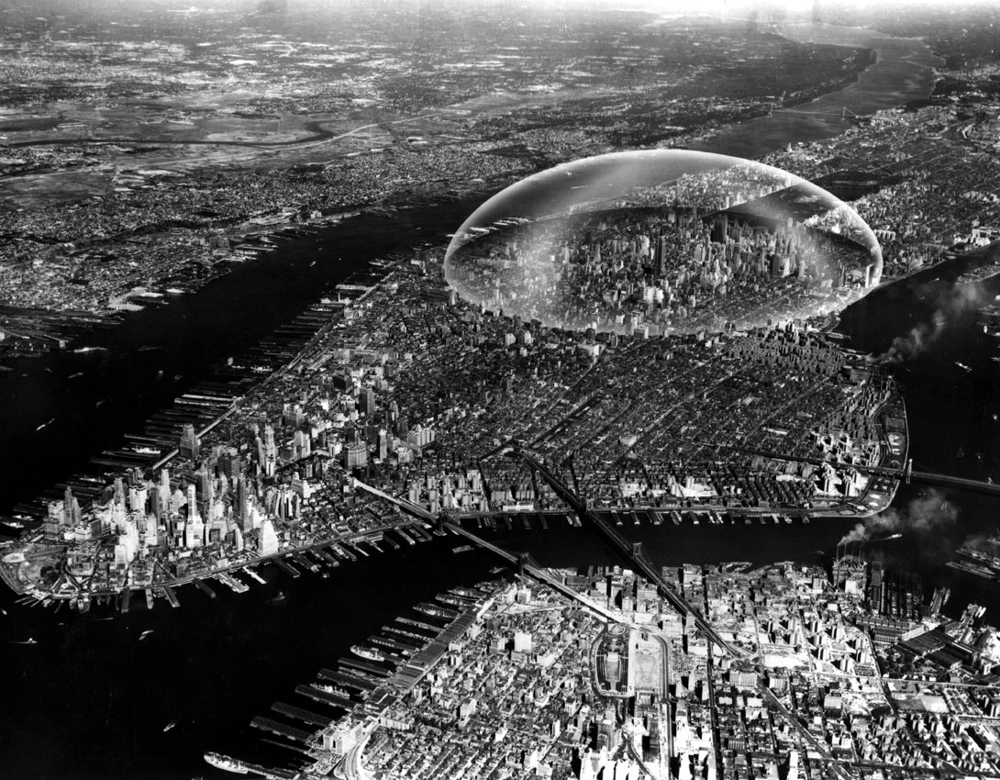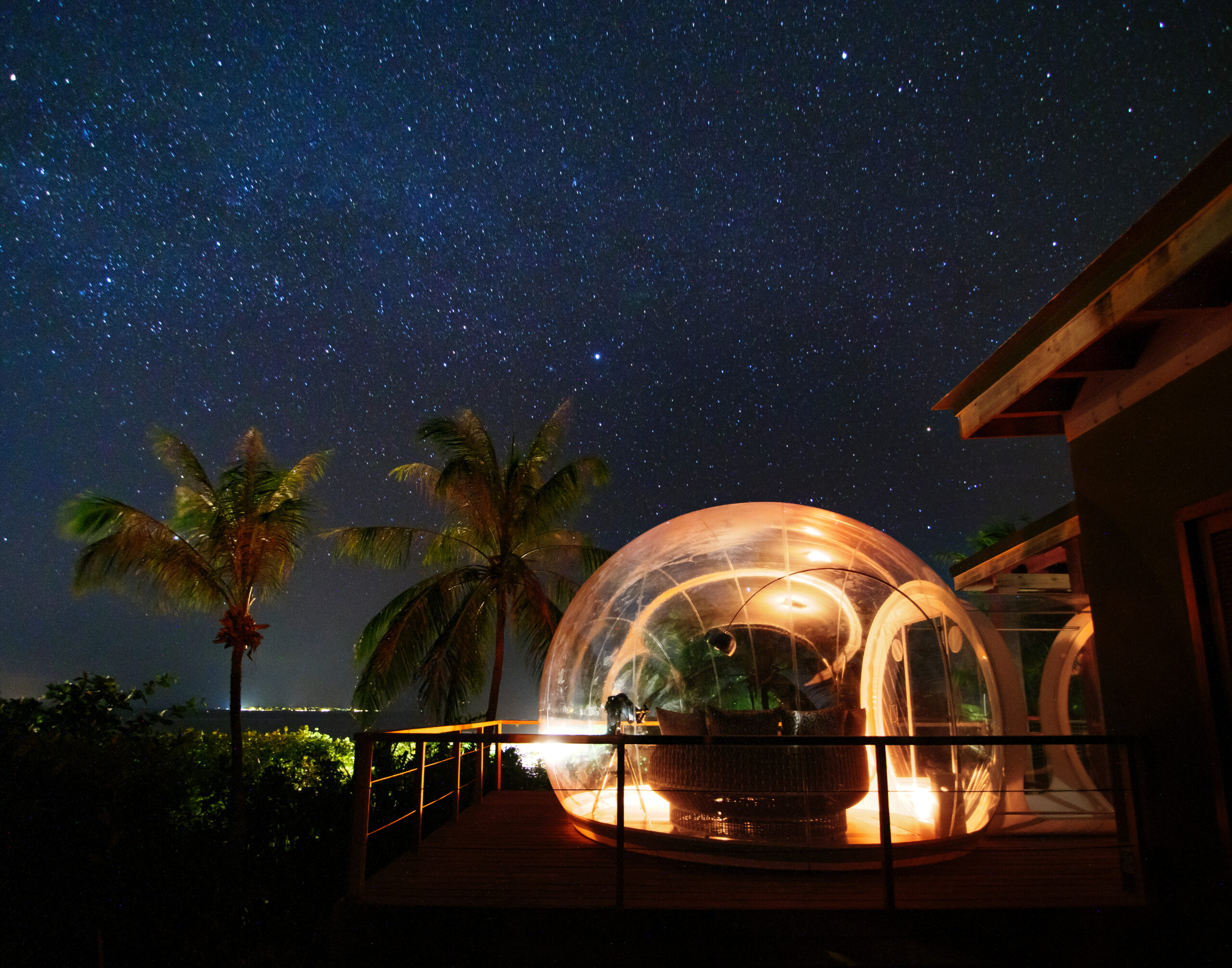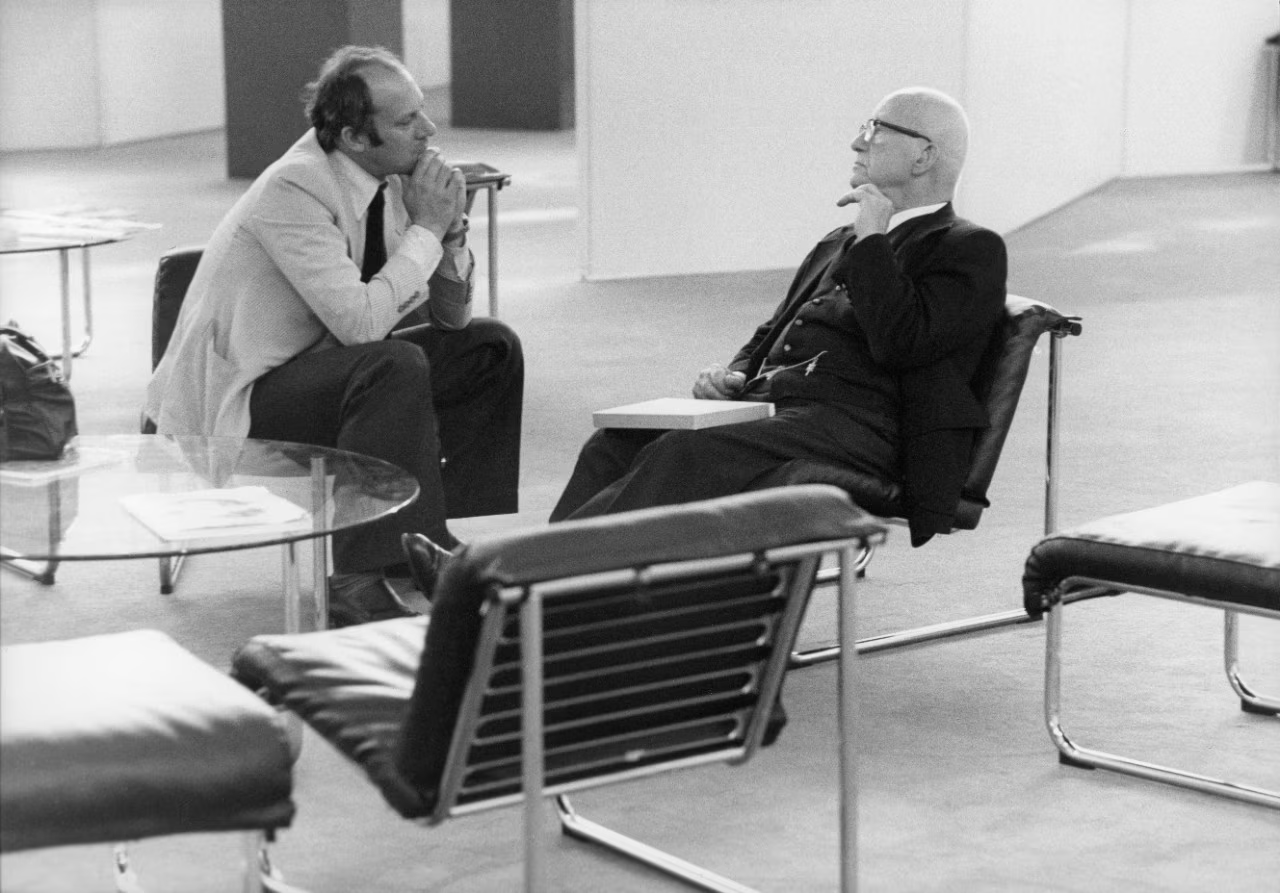
For Fuller, architecture wasn’t just a means to create spaces; it was a tool to redefine the relationship between humans and their surroundings. His legacy was realized in inventions like the geodesic dome, an ultralight, resilient design that revolutionized the way we think about habitability. Under his philosophy of “doing more with less,” he promoted the use of flexible, self-sufficient structures designed to optimize resources without compromising functionality or comfort. His work anticipated many of today’s concerns about climate change and uncontrolled urban growth, proposing alternatives that once seemed utopian but are now more relevant than ever.
In this context of innovation and the search for sustainable solutions, we are certain that Skybubbles carry a great deal of Fuller’s vision, emerging as a contemporary materialization of his ideas. Our accommodation project blends architecture and nature in a proposal that removes barriers and offers an immersive experience in the environment without disrupting its balance. Skybubbles isn’t just a reinterpretation of the concept of habitat; it’s a logical evolution of Fuller’s principles applied to an era where sustainability and sensory experience have become key factors in architecture and design.
Just like Fuller’s geodesic domes, Skybubbles are designed with minimal material and maximum structural strength. Their pneumatic design ensures an efficient distribution of air pressure, guaranteeing stability without the need for foundations or alterations to the terrain. This not only makes installation and transport easier but also reduces their environmental impact to almost zero. Fuller always advocated for lightweight, nomadic, and adaptable architecture, and Skybubbles makes this a reality, allowing structures to be relocated without leaving a trace on the landscape.
But beyond the structure, what truly connects Skybubbles with Fuller’s work is the experience of space. For him, architecture shouldn’t be a boundary between humans and their surroundings, but rather a means to enhance the connection with nature. At Skybubbles, we take this idea to the extreme, offering a stay where boundaries disappear and the landscape becomes the true protagonist. Sleeping under the open sky, without visual barriers, architectural interference, and with total integration into the environment, is the purest manifestation of Fuller’s vision of architecture—one that doesn’t impose but flows with its context.

Another key point in the connection between Fuller and Skybubbles is sustainability. While traditional architecture has been marked by excessive resource consumption and waste generation, Fuller imagined a world where structures were self-sufficient and energy-efficient. In this regard, Skybubbles not only seeks to minimize environmental impact but also opts for recyclable materials and low-energy technologies, aligning with a more eco-friendly approach to architecture.

Throughout his life, Fuller argued that the future of architecture wasn’t about building more but about building better: smarter, lighter, and more environmentally respectful structures. Skybubbles embodies this philosophy, offering a real alternative to traditional accommodation models and proving that it’s possible to live in harmony with nature without disrupting its balance.
